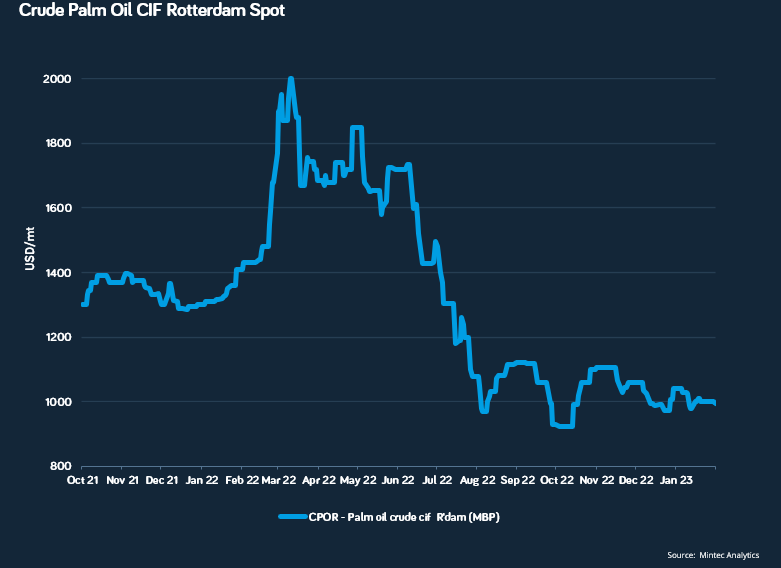Mixed Fundamentals Continue to Cloud the Palm Market
In a follow-up from a story published on 20th January 2023 that can be viewed here, Mintec has learned that Malaysian palm oil production was estimated down 26-30% for the entirety of January compared to December. The majority of market players surveyed telling Mintec that they had pegged the month-on-month production decline at 28%. A production decline of this size would usually mean that stocks would tighten and provide bullish momentum to palm oil prices. Yet, exports over January are estimated 26-27% lower than in December, according to Mintec’s industry sources, adding bearish counterweight to production declines. This continuation of a fundamental tug-of-war is “making it difficult to predict where the market is going to move. Palm oil likely bounces around the current levels until we get more clarity,” a trader told Mintec.
A separate trader added, “despite the fall in exports not being as steep as I first thought, it does confirm the fact that demand for palm oil right now is very poor. My biggest concern is the fact that the stock levels for key buyers, such as India and China, are very high. If those two countries don’t need to buy, where is demand going to emerge from?”
Chinese palm oil stocks currently sit at more than 900,000 metric tonnes, according to market players. This palm oil stock level would represent the highest stock levels within China for over six years and may mean that China will not need to seek extra purchases for the coming weeks. Besides, India’s buying of palm oil has slowed, as prices of alternative oils, such as sunflower and soy oil, have declined and now provide attractive margins for refiners and importers. Combined, these factors may mean that sunflower and soy oil stocks could decline, while palm oil stocks swell despite lower production.
A palm oil broker commented to Mintec, “palm had the benefit of being the cheapest major oil by some margin for many months. Since prices of other vegetable oils have declined, this is not the case anymore. What this means is that the market is thinking twice about buying palm when sunflower oil, for example, isn't that much more expensive. Having said that, the Russia/Ukraine situation appears to be escalating, and who knows how long the grain corridor deal will last. My final thought is that palm is currently being led by the other oils and events in those markets will dictate palm oil’s future price levels.”



















